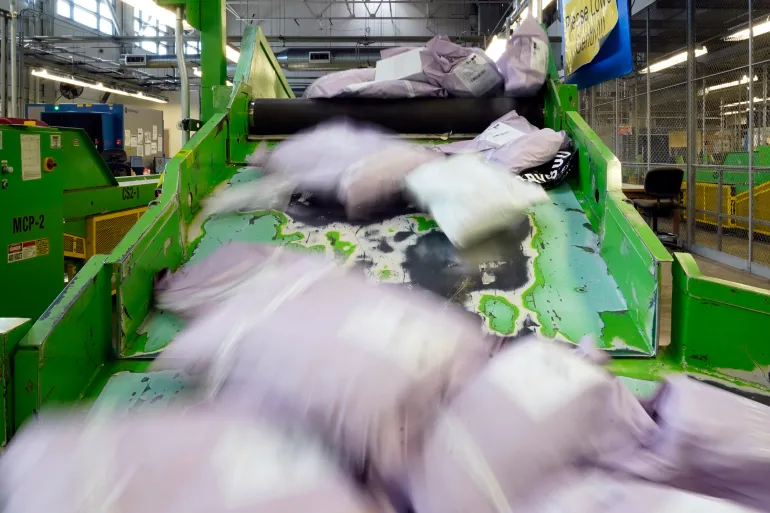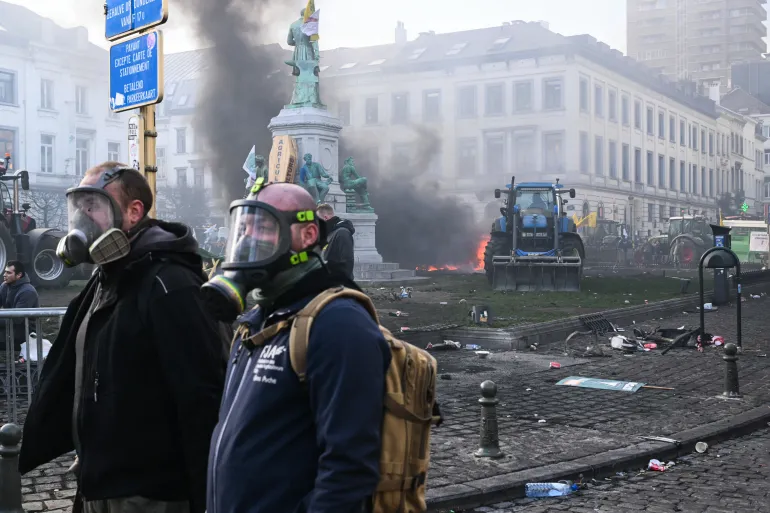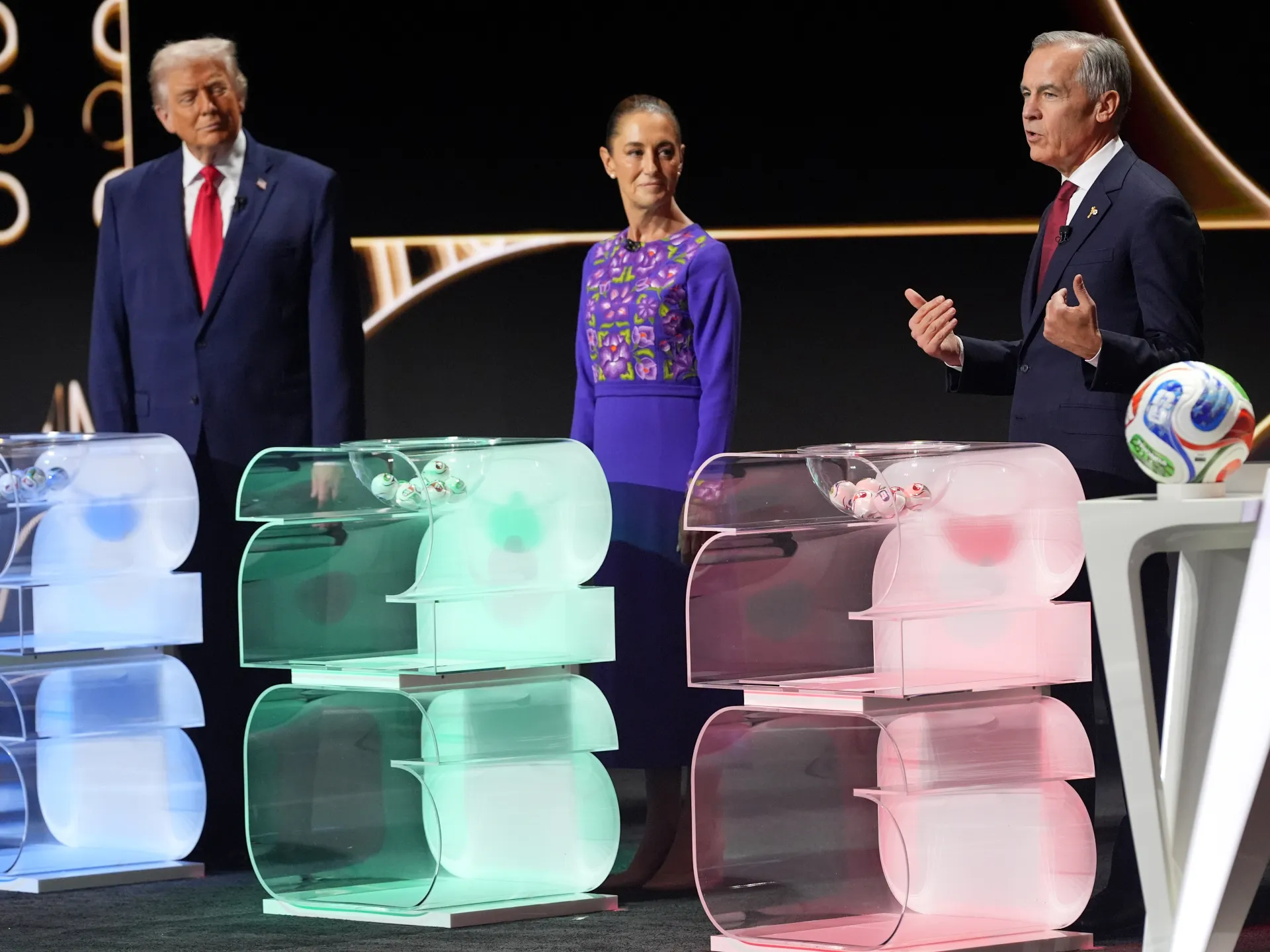UPS stumbles into holiday season amid shifting trade rules | Trade War
New York City, United States – Since the recent termination of the nearly decade-old trade rule called “de minimis,” United States consumers and businesses have been exposed to slower shipping, destroyed packages and steep tariff fees on international goods – foreshadowing what could make for a chaotic holiday shopping season.
For major international carrier UPS, navigating the latest regulatory changes has proved more fraught than for its competitors FedEx and DHL.
Recommended Stories
list of 4 itemsend of list
Matthew Wasserbach, brokerage manager for Express Customs Clearance in New York, a firm that assists importers with documentation, tariff classifications, valuation, and other federal requirements, has witnessed the fallout as UPS customers seek his firm’s assistance to clear packages entering the US.
“Over the last few months, we’ve been seeing a lot of UPS shipments, in particular, becoming stuck and being lost or disposed of … This all stems from the ending of the de minimis,” said Wasserbach. “Their [UPS’s] whole business model changed once the de minimis was ended. And they just didn’t have the capacity to do the clearance … a lot of people are expecting to receive international packages, and they’re just never gonna get them.”
UPS did not respond to Al Jazeera’s request for comment.
Suspending tariff exemptions
Since 2016, the de minimis trade exemption determined that packages worth $800 or less were not subject to taxes and tariffs. According to US Customs and Border Protection (CBP), the number of shipments entering the US claiming the exemption increased by more than 600 percent from 139 million shipments in 2015 to more than one billion in 2023.
In August, this all changed. President Donald Trump signed an executive order suspending de minimis treatment for all countries, spiralling US imports into a new landscape of paperwork and processes, subject to duties and tariffs based on their place of origin.

Just a month after de minimis ended, while shipping products with UPS, Tezumi Tea, an online Japanese tea and teaware company that sells its products online and through meetups in New York City, fell victim to the tariff backlog at US customs. Tezumi lost roughly 150kg (330lbs) of matcha, totalling about $13,000.
“We responded by increasing buffers in our supply planning across the dozen farms that we partner with,” said Ryan Snowden, a cofounder of Tezumi. “Even with those adjustments, the loss had a severe effect on a number of our cafe customers who suddenly needed to switch to another matcha blend.”
Now, UPS is no longer accepting shipments from Japan, and Tezumi has switched to shipping supplies through alternate carriers such as DHL and FedEx.
Disposing shipments
Wasserbach has witnessed similar instances of UPS losing imports.
“When a UPS package goes uncleared, it’s just basically sitting in a UPS facility, uncleared for a certain period of time,” said Wasserbach. “Then UPS indicates in their tracking that they’re disposing of the shipments without making, really, any effort, from what I’ve seen, to contact either the sender or the receiver, to get information they need to do to get the clearance.”
Wasserbach shared email chains with Al Jazeera from UPS customers who looped in his firm to their customs clearance UPS debacles.
In one exchange, UPS customer Stephan Niznik responded to a notice from the UPS Alternate Broker Team that their packages had been “destroyed”.
“The tracking says on multiple instances that UPS attempted to contact the sender (me), but this is false; aside from a request for more information on September 5 (which I responded to immediately), UPS never attempted to contact me,” wrote Niznik. “It is absolutely disgraceful that my package was mishandled – clothes and children’s toys were destroyed at the hands of UPS.”
In another email chain, UPS told customer Chenying Li that their package was released following an email from Express Customs Clearance stating that the shipment was cleared.
A week later, Li’s package was still showing as “Pending Release”, and when they asked for an update on the shipment, UPS responded, “At this time we are unable to provide an ETA, as volume is currently backed up and awaiting delivery due to the De Minimis impact.”
‘Impose additional pressure’
In addition to the customs backlog, Virginia Tech associate professor David Bieri says cost prevention may provide one explanation for UPS choosing to dispose of packages rejected by US customs rather than return the shipments to senders.
“All these additional rules and regulations impose additional pressure on already relatively tight margins for these companies – UPS, FedEx, DHL and so forth,” said Bieri. “They need to make money, and sometimes it’s easier not to fulfil a service than to take on the additional cost of customs clearance and making sure that it gets to its final destination.”
Bieri added that UPS resorting to package disposal may indicate that they believe themselves to be in “a sufficiently strong monopolistic position that they can do such horrible practice – unilateral nonfulfillment of contract”.
Wasserbach told Al Jazeera that “with FedEx and DHL shipments, we aren’t seeing these problems”.
When asked whether FedEx has disposed of packages stuck in customs, a spokesperson wrote, “If paperwork is not complete and/or rejected by US Customs and Border Protection, FedEx actively works with senders to update paperwork to resubmit to CBP or return shipments to senders. In some cases, shippers can request that packages be disposed of if they would prefer not to pay to return to sender. In those rare cases, recipients are notified at the direction of the shipper. This is not a common practice. We remain business as usual.”
Final cost of delivery at your doorstep
But FedEx and DHL are encountering some of the same challenges as UPS. Since August, when de minimis ended and small packages were suddenly subject to taxes and tariffs, anyone who ordered from abroad was susceptible to unexpected fees on imported goods.

Without de minimis protecting packages worth $800 and less from import fees, the consumer essentially becomes the importer.
“You might order something you find a bargain abroad, and you don’t pay attention to where things are shipped from … and it might be shipped from China, and you might be in for a rude awakening once that thing arrives at your door,” said Beiri. “You paid the price and thought that this was it. But your deliverer is saying, no, actually, we’re passing that cost on to you. Because you’re acting as the importer.”
These fees could cost equal to or more than the item you ordered itself. “You’ve got to pay extra attention to small prints,” said Beiri.
With looming costs and lost packages on the horizon, Beiri says shoppers will likely make “substitution questions” – are you renovating or are you going on vacation? Are you splashing on Christmas gifts, or are you treating yourself to dining out?
“I think these are interesting times of having to make choices and asking yourself what can we do given that we have an affordability crisis, rent, insurance, making ends meet,” said Beiri. “That’s what’s currently going on.”
In order to better handle evolving trade policy, Wasserbach says that UPS will likely aim to hire a massive number of entry writers to assist with necessary documentation for legal transportation of goods across international borders. However, now that it is the busiest time of year in terms of delivering people their Christmas shopping, Wasserbach doubts an influx of hiring could make much of a difference, given the amount of training required.
The company’s revenue has already taken a hit on account of Trump’s policies. Tariffs on China and the elimination of the de minimis rule saw imports from China, UPS’s most profitable route, drop reportedly 35 percent earlier this year.
“I would assume it’s gonna get better next year,” said Wasserbach. “But as for solving this problem before Christmas, I don’t think that that’s gonna happen.”





